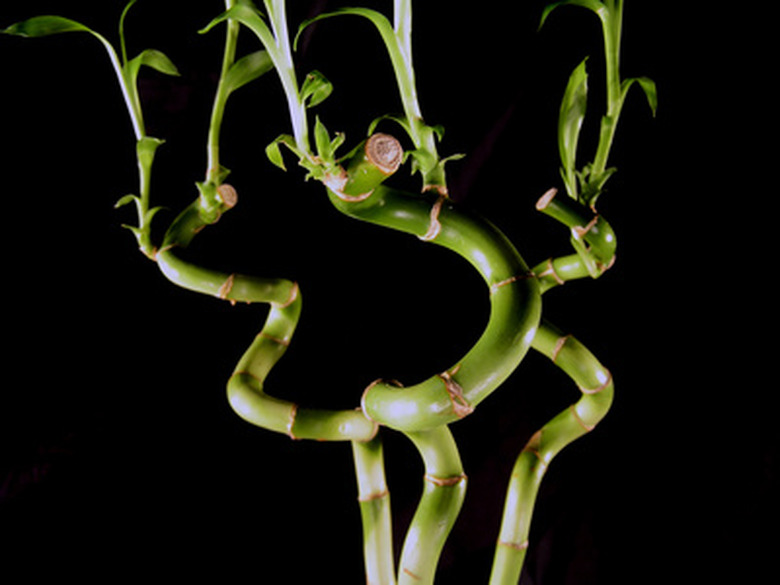Instructions To Curl Lucky Bamboo With Wire
Lucky bamboo is neither lucky, nor is it bamboo. The plant is a cutting of Dracaena sanderana. The plant, which is native to West Africa, grows no more than 3 feet tall with stems that only grow to finger-sized diameter. Thanks to the Chinese cultural identification with bamboo and the influence of feng shui and New Age culture, lucky bamboo is a common accent plant for the home. When trained with wire, lucky bamboo will grow in a spiral or curled shape that looks quite unusual.
Lucky bamboo is neither lucky, nor is it bamboo. The plant is a cutting of Dracaena sanderana. The plant, which is native to West Africa, grows no more than 3 feet tall with stems that only grow to finger-sized diameter. Thanks to the Chinese cultural identification with bamboo and the influence of feng shui and New Age culture, lucky bamboo is a common accent plant for the home. When trained with wire, lucky bamboo will grow in a spiral or curled shape that looks quite unusual.
Step 1
Purchase young, succulent plants. Like bonsai trees, lucky bamboo will grow into a curled shape easily if the stems bend initially. Older, harder bamboo may crack as you try to shape it. If you cut back older lucky bamboo, young stems will sprout from the tip of the plant.
- Lucky bamboo is neither lucky, nor is it bamboo.
- When trained with wire, lucky bamboo will grow in a spiral or curled shape that looks quite unusual.
Step 2
Bend copper annealed wire into a spiral shape. You can purchase copper annealed wire from a bonsai supply store.
Step 3
Twist the bottom end of the annealed wire around the base of the bamboo. Then, wrap the spiral wire loosely around the bamboo so the stem bends into the spiral shape. Wrap the wire loosely enough that it does not cut into the bamboo.
Step 4
Check the bamboo weekly to ensure that it has not grown too fat for the wire wrapping. Re-wrap the bamboo if the wire becomes too tight for the stem.
- Bend copper annealed wire into a spiral shape.
- Wrap the wire loosely enough that it does not cut into the bamboo.
Step 5
Remove the wire once the bamboo stem hardens into position. If the stem does not retain its curled shape, re-wrap the wire. Wrap new shoots as they grow if you wish to continue the curling bamboo shape. Or, allow the new shoots to grow straight up.
Lucky Bamboo Alive
Lucky bamboo can live in any water-tight container. Algae growth typically doesn't harm the plant but may look unsightly. A substrate material, such as sand or gravel, helps to anchor lucky bamboo. Change the water one or two times per week. In direct sun, it can burn. In low light, it can take on a thin, yellow appearance. Try placing it on a desk, countertop or table near, but not directly in front of, a sunny window. Easy Bloom recommends a balanced liquid houseplant fertilizer, such as one with a 10-10-10 ratio of nitrogen, phosphorous and potassium, diluted to 1/10 its original strength and used in place of clear water for every third water change.
- Remove the wire once the bamboo stem hardens into position.
Things Needed
- Annealed copper wire
- Plant pruners
References
- "Illustrated Guide to Gardening"; The Reader's Digest Association; 1995
- University of Arkansas: Plant of the Week–Lucky Bamboo
- University of Florida Extension: Lucky Bamboo
- Easy Bloom: Lucky Bamboo
- University of Illinois Extension: Dracaena
